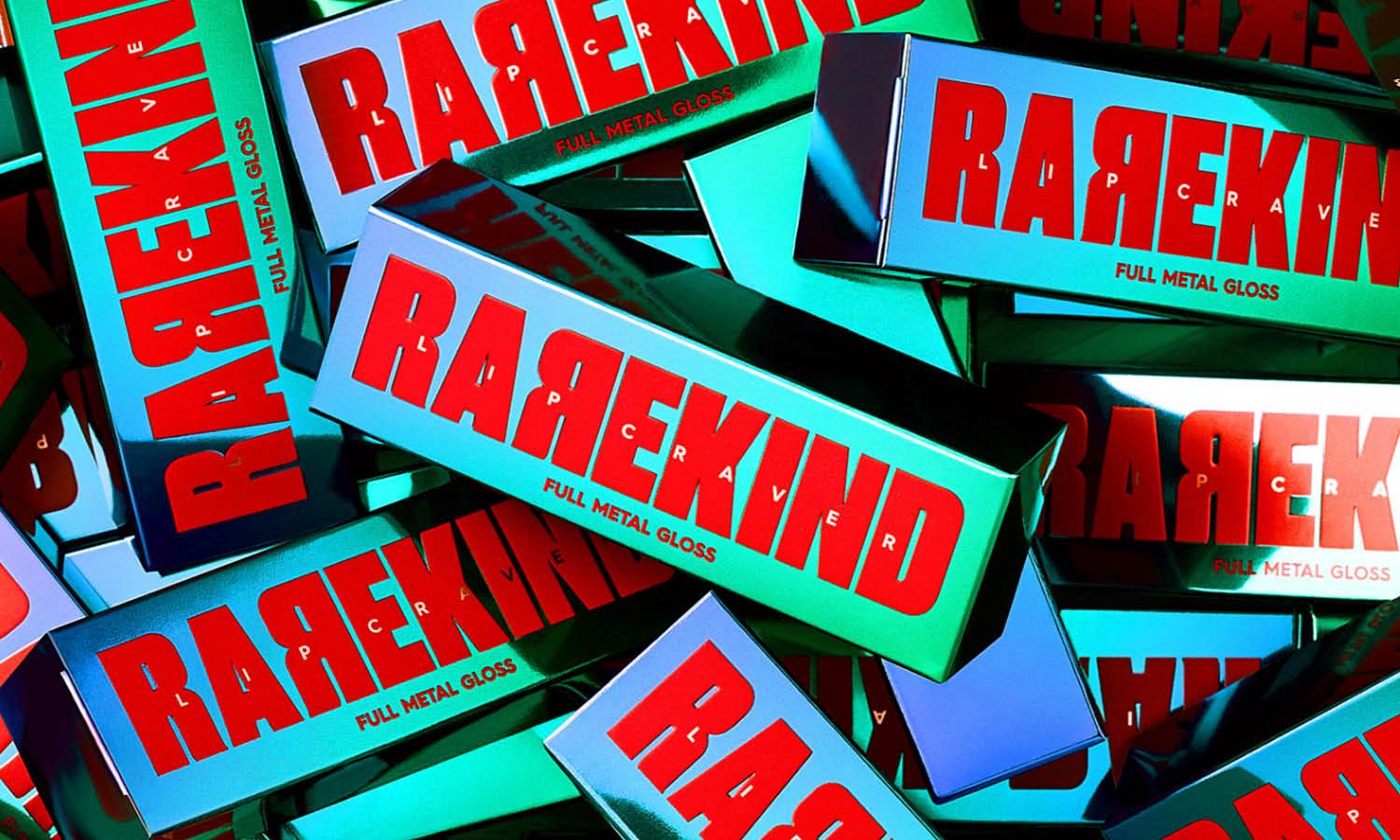Here's What You Need To Know About Logo Theft

In today’s digital age, the distinctiveness of a brand is paramount, and logos play a critical role in ensuring that a brand stands out. However, with the proliferation of online platforms and digital tools, the theft of these valuable assets is increasingly common. Logo theft, an unauthorized use or close imitation of an existing logo, can significantly undermine a brand’s identity and its competitive edge.
Understanding logo theft is essential for businesses of all sizes to protect their intellectual property. This malpractice not only dilutes a brand's impact but also leads to confusion among consumers, potentially diverting business and damaging the brand’s reputation. The repercussions of logo theft extend beyond the mere copying of a design; they touch on the legal boundaries of copyright and trademark laws, challenging businesses to enforce their rights.
This article will delve into the intricacies of logo theft, exploring its legal implications, methods to identify theft, and steps to protect and enforce a brand's logo rights. Our goal is to equip you with the knowledge to safeguard your brand’s logo effectively, ensuring that it continues to represent your business uniquely and authentically.
The Legal Implications of Logo Theft
Logo theft is not just an ethical issue but a legal one that can have significant financial and reputational consequences. When a logo, a vital asset for brand identity, is copied or used without permission, it constitutes intellectual property infringement. Copyright laws protect original artworks, including logos, which are considered unique to the businesses they represent. In cases of logo theft, companies can pursue legal action against the offenders under copyright infringement statutes.
The legal process involves proving that the logo is an original creation and that significant similarities exist between the original and the contested logo. The burden of proof can often be a complicated and resource-intensive undertaking. Successful legal action can result in injunctions, forcing the infringer to cease using the logo, and may also lead to financial compensation for damages caused by the theft.
Moreover, trademark registration enhances this protection, offering broader safeguards across jurisdictions and making it easier to tackle theft swiftly. Registering a logo as a trademark grants the owner exclusive rights to use it for commercial purposes in the designated classes of goods or services. It’s crucial for businesses to consider trademarking their logos to leverage the full spectrum of legal protections available, thus effectively deterring potential theft and ensuring the logo’s integrity remains intact.
How to Identify Logo Theft
Identifying logo theft is crucial for protecting a brand's visual identity and its associated commercial value. One of the first steps is to conduct regular searches and monitoring using various digital tools designed to detect unauthorized use of your logo. These tools can scan the internet, including websites, social media platforms, and marketplaces, to locate instances where your logo might be used without permission.
Businesses should also be vigilant about competitive analysis, which involves keeping an eye on competitors or similar businesses that might employ logos that closely resemble their own. This process includes reviewing marketing materials, online content, and product packaging. It's also beneficial to educate customers and fans about your logo’s unique features, empowering them to spot and report potential thefts.
Another effective strategy is to use reverse image search technology, which can find visual matches online. By uploading your logo to these search engines, you can uncover exact or modified replicas. Paying attention to new businesses, brands, or domain registrations can also provide early warnings of potential logo misuse.
When suspicious usage is detected, it’s important to assess the similarity, considering factors like design, color, and usage context, to determine if it indeed constitutes theft. If theft is confirmed, legal counsel should be sought to discuss enforcement options to protect your brand effectively.
Case Studies of Famous Logo Thefts
Logo theft can impact even the most established brands, as illustrated by several high-profile cases. One notorious example involved Apple Inc., when a music company, Apple Corps, sued them for logo and name similarity. The lawsuit highlighted the challenges of protecting brand identity across different industries. Although settled, it showcased the legal battles that can ensue over logo similarities.
Another example is the 2015 controversy involving the Tokyo 2020 Olympics logo. Shortly after its unveiling, Belgian designer Olivier Debie accused the creators of the logo of copying his design, originally made for the Théâtre de Liège. The similarity prompted a legal challenge, leading to the eventual withdrawal of the Tokyo logo. This case not only stressed the importance of originality in design but also the global scale on which logo theft can resonate.
These instances demonstrate that logo theft can lead to costly legal disputes and potential public relations crises. They emphasize the need for thorough research and originality in logo design to avoid the repercussions of intellectual property infringement. For businesses, these case studies serve as a cautionary tale, underscoring the importance of securing logo rights through proper channels and vigilance in protecting their brand's visual identity.

The Impact of Logo Theft on Brands
The theft of a logo can have far-reaching consequences for a brand. Primarily, it dilutes the brand’s identity, confusing consumers and potentially diverting clientele to competitors. When a logo is used without authorization, it can lead to a loss of exclusivity, making it difficult for customers to distinguish between the original brand and imitators. This confusion can erode trust and loyalty, which are critical components of customer relationships.
Financially, logo theft can lead to significant losses. Companies may find themselves spending extensively on legal battles to protect their intellectual property, diverting funds from other business development areas. Additionally, if the theft leads to customer loss, the decline in sales further compounds the financial strain.
Moreover, the brand’s reputation suffers. The perception of a brand that cannot secure its intellectual property may be seen as weak or negligent, tarnishing its image and devaluing the brand equity built over years. This reputational damage can be long-lasting and more challenging to repair than the immediate financial or legal repercussions.
Therefore, understanding the impact of logo theft is crucial for brands aiming to maintain their market position and ensure their public image and financial health remain intact. It highlights the importance of proactive measures in intellectual property protection and the need for swift action when theft occurs.
Preventative Measures to Protect Your Logo
To protect your logo from theft, several proactive steps should be taken to ensure its security and exclusivity. First and foremost, conduct a thorough trademark search before finalizing your logo design to avoid unintentional infringement and ensure originality. This can be done through national intellectual property offices or by hiring a professional trademark attorney.
Once the logo design is finalized, registering it as a trademark is crucial. This legal step grants exclusive rights to use the logo in commerce within the registered categories, significantly reducing the risk of theft. Additionally, consider registering the logo in multiple countries if your business operates internationally, to ensure global protection.
Implementing digital measures is also vital. Use digital watermarks and metadata on your logo files to track and manage digital usage. Regularly monitor the internet and social media for unauthorized use of your logo using image recognition software, which can alert you to potential infringements.
The Role of Trademark in Protecting Logos
Registering a logo as a trademark offers several benefits. Firstly, it provides legal evidence of ownership, which is invaluable in cases of logo theft. With a registered trademark, a business can legally enforce its rights and prevent others from using a similar or identical logo. In the event of infringement, the trademark owner can take legal action, including seeking damages for unauthorized use. These are some of the key benefits of trademark registration.
The process of trademark registration involves a detailed examination by the trademark office, which checks for conflicts with existing trademarks. This ensures that the logo is distinctive enough to qualify for protection. Once registered, the trademark owner has the legal prerogative to enforce their rights through cease and desist orders or, if necessary, legal action against infringers.
Trademark registration also acts as a public record, deterring others from using a similar mark by making it easy to discover through trademark searches. For broader protection, consider registering the logo in significant markets where your brand operates or intends to expand, as trademark law is territorial and rights are limited to the country of registration.
Furthermore, holding a registered trademark increases the brand's value, making it an asset in case of company mergers or acquisitions. It provides a clear advantage in any legal disputes over logo ownership or theft, as courts give preference to registered marks over unregistered ones.
Digital Tools to Detect Logo Theft
In the fight against logo theft, several digital tools have become indispensable for businesses aiming to protect their brand identity. Image recognition software, such as Google Images and TinEye, allows companies to upload their logos and search the internet for visual matches. These tools can detect exact copies and similar designs, alerting businesses to potential infringements.
Another powerful resource is BrandShield and MarkMonitor, which provide comprehensive brand protection services that include monitoring the use of logos across various digital platforms. These platforms utilize advanced algorithms to scan websites, social media, and even e-commerce platforms to ensure a logo is not being used without permission.
Digital watermarking is also a viable technique for logo protection. By embedding a digital watermark, businesses can track where their logo is used online and identify unauthorized use. This method is particularly useful for companies that distribute digital content frequently.
For ongoing surveillance, setting up Google Alerts for your logo or brand name can provide real-time notifications of new usages across the web. This proactive approach allows businesses to react quickly to any unauthorized use of their logo.
Employing these digital tools not only helps in detecting logo theft but also in documenting instances of infringement, which is crucial when pursuing legal action. By leveraging technology, businesses can effectively safeguard their logos and maintain the integrity of their brand.

What to Do If Your Logo Is Stolen
Discovering that your logo has been stolen can be distressing, but taking swift and calculated action is crucial. The first step is to document the theft by taking screenshots and noting the URLs where the stolen logo is being used. This evidence is vital for any legal proceedings that may follow.
Next, consult with a trademark attorney to understand your legal options. If your logo is trademarked, you have strong grounds to demand the immediate cessation of its unauthorized use. Your attorney can help draft a cease and desist letter, a formal request to stop the infringing activity, which is often enough to resolve the issue.
If the infringement persists, you may need to file a lawsuit to enforce your rights. Legal action should be considered a last resort due to the potential costs and time involved. However, defending your intellectual property is crucial for maintaining your brand's integrity and market position.
Additionally, consider reaching out directly to the infringer if they are identifiable and their contact information is available. Sometimes, especially in cases of smaller or less knowledgeable businesses, they may not be aware that they are infringing and will cease usage upon being informed.
Navigating the Legal Process of Logo Theft Claims
Navigating the legal process in cases of logo theft requires a strategic approach to ensure your intellectual property rights are upheld. Initially, identifying and documenting the infringement is essential. This involves collecting evidence such as screenshots, URLs, and any communications related to the unauthorized use of your logo.
Once you have compiled evidence, consult with an intellectual property attorney who specializes in trademark law. A legal expert will guide you through the process, beginning with a cease and desist letter sent to the infringer. This letter typically demands that the offender stop using the logo and may also seek damages for unauthorized use.
If the cease and desist letter does not resolve the issue, the next step is to file a lawsuit. Legal action can be costly and time-consuming, so it’s vital to evaluate the extent of the theft and its impact on your business before proceeding. The lawsuit might involve seeking injunctive relief to prevent further use of the logo and monetary compensation for damages caused by the infringement.
Throughout the legal process, maintaining detailed records and a clear line of communication with your legal team is crucial. They will handle the intricacies of filing motions, navigating court procedures, and negotiating potential settlements.
Educating Employees and Partners About Logo Usage
Educating employees and partners about the correct usage of your company's logo is crucial in preventing logo theft and maintaining brand integrity. Start by developing a comprehensive brand guidelines document that includes clear instructions on how the logo should be used, including acceptable colors, sizes, and contexts. This document should be easily accessible and regularly updated to reflect any changes in branding strategy.
Training sessions should be conducted for all new employees, with refreshers for existing staff, to ensure everyone understands the importance of adhering to these guidelines. These sessions can include examples of correct and incorrect logo uses, highlighting the potential consequences of misuse.
It’s also important to include information on the legal implications of logo theft, emphasizing the role each employee plays in safeguarding the company’s brand. Employees should be instructed on how to report suspected misuse or theft of the logo internally.
For partners and third-party vendors who might use your logo, such as marketing agencies or distributors, provide them with a subset of your branding guidelines specifically tailored to their needs. Include clauses in contracts that outline the legal consequences of misusing the logo. Regular audits of logo usage by employees and partners can help catch any deviations from the guidelines early before they become larger issues.
Conclusion
Understanding the gravity of logo theft is essential for any business aiming to protect its brand identity. Taking proactive measures, such as registering trademarks, monitoring digital platforms, and educating employees about proper logo usage, are vital steps in safeguarding a logo. Remember, the repercussions of logo theft extend beyond legal challenges; they can significantly impact a brand's reputation and financial health. By being vigilant and responsive to any instances of infringement, businesses can ensure their logos remain exclusive representations of their brand, thereby maintaining their integrity and value in the competitive market.
Let Us Know What You Think!
Every information you read here are written and curated by Kreafolk's team, carefully pieced together with our creative community in mind. Did you enjoy our contents? Leave a comment below and share your thoughts. Cheers to more creative articles and inspirations!
















Leave a Comment